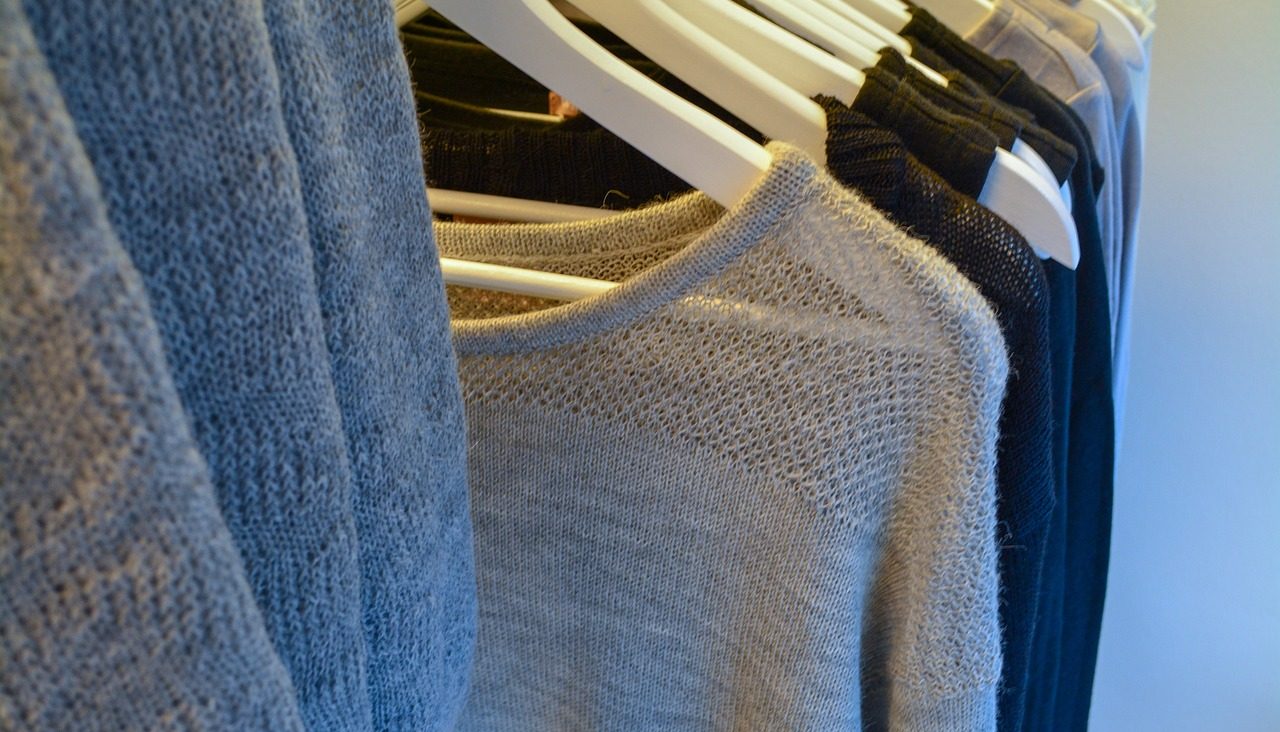The textile industry is one of the most important sectors of the global economy, contributing to employment, income, and trade. According to International Trade Center (ITC), world textile and clothing exports increased by 5.0% in 2022, reaching $950.6 billion in value. However, this growth is not uniform across different product categories. This article will provide a comprehensive overview of the state of world textile and clothing exports in 2022, as well as the opportunities and challenges facing the industry in the future.
Knitted Garments
Knitted garments experienced a commendable 9.5% growth from 2021 to 2022, reaching a substantial value of $297.9 billion. This growth can be attributed to several factors, including changing fashion trends favoring comfortable and versatile clothing options. Additionally, the rise of athleisure and casual wear has boosted the demand for knitted garments, leading to increased sales.
Woven Garments
Similar to knitted garments, woven garments witnessed strong growth of 11.6%, reaching $260.6 billion in 2022. The popularity of tailored and formal wear, coupled with the increased focus on sustainable and ethical fashion, has contributed to the surge in demand for woven garments. This growth highlights the resilience of this category despite the changing fashion landscape.
Made-ups (including Home Textiles)
Made-ups, which include home textiles such as towels, bed linen, and curtains, experienced a decline of 6.7% in exports, falling to $85.4 billion. This downturn could be attributed to various factors, including changing consumer preferences, increased competition from lower-cost imports, and the disruption caused by the COVID-19 pandemic. To regain momentum, manufacturers in this segment need to focus on product innovation, quality differentiation, and effective marketing strategies.
Cotton Fiber, Yarn, and Woven Fabrics
The cotton segment experienced a decline of 8.0% in exports, reaching $57.8 billion in 2022. This decrease can be attributed to several factors, including increased competition from synthetic fibers, fluctuating raw material prices, and supply chain disruptions caused by the pandemic. However, the demand for sustainable and organic cotton products might present opportunities for growth in the future, necessitating strategic adaptations by cotton manufacturers.
Manmade Filament Yarn and Woven Fabrics
In contrast to the decline in cotton-based products, the manmade filament yarn and woven fabrics category witnessed a healthy growth rate of 5.3%, amounting to $57.7 billion in 2022. The growing preference for synthetic materials, driven by their durability, affordability, and performance properties, has bolstered the demand for manmade filament yarn and woven fabrics. Additionally, advancements in technology have enhanced the quality and versatility of these materials, further driving their popularity.
Knitted or Crocheted Fabrics
Knitted or crocheted fabrics remained relatively stable, with a marginal decline of 0.4% in revenue, maintaining a value of $42.7 billion. While the growth rate may appear stagnant, it is important to note that this category has sustained its market share despite increased competition from other fabric types. The versatility and comfort offered by knitted fabrics continue to resonate with consumers, ensuring the category’s consistent performance.
Manmade Staple Yarn and Woven Fabrics
Manmade staple yarn and woven fabrics experienced a growth rate of 3.7%, reaching $38.5 billion in 2022. This positive trend can be attributed to the increasing demand for synthetic materials in various applications, including apparel, home furnishings, and industrial sectors. The versatility and cost-effectiveness of manmade staple yarn and woven fabrics make them an attractive choice for manufacturers and end-users alike.
Nonwoven Fabrics
Nonwoven fabrics, which find applications in industries such as healthcare, automotive, and construction, experienced a modest decline of 4.3%, with revenue totaling $31.2 billion in 2022. However, the growing awareness of hygiene and the increased emphasis on sustainability could provide opportunities for recovery and growth in the coming years.
Coated and Laminated Fabrics
The coated and laminated fabrics category witnessed a modest growth rate of 2.6%, generating $29.1 billion in revenue in 2022. Coated fabrics are widely used in various sectors, including automotive, fashion accessories, and industrial applications. The growth can be attributed to increased demand for these specialized materials, driven by advancements in coatings technology, durability requirements, and aesthetic appeal.
Carpets and Floor Coverings
The carpets and floor coverings segment experienced a decline of 6.6% in revenue, amounting to $17.3 billion in 2022. This decline can be attributed to several factors, including shifting consumer preferences towards hard surface flooring options such as wood or laminate, as well as increased competition from alternative floor covering materials. Additionally, the slowdown in the construction and housing sectors during the pandemic may have impacted the demand for carpets and floor coverings. To revive growth, manufacturers in this segment may need to focus on product innovation, design differentiation, and marketing strategies that highlight the unique benefits of carpets and floor coverings.
Special Woven Fabrics
The special fabrics category saw a modest growth of 0.9% in revenue, reaching $12.9 billion in 2022. Special fabrics encompass a wide range of technical textiles used in industries such as aerospace, automotive, and medical. While the growth rate may appear modest, it is important to note that this category serves niche markets and caters to specialized applications. The steady growth indicates the sustained demand for these high-performance textiles and the importance of technical advancements in driving innovation within the industry. It should be noted that this category does not include all type of technical textiles.
Wool Fiber, Yarn, and Woven Fabrics
The wool segment demonstrated a growth rate of 6.2%, with revenue amounting to $12.0 billion in 2022. This growth can be attributed to the unique properties of wool, such as natural insulation, moisture-wicking, and sustainability. The increasing popularity of eco-friendly and natural fibers has boosted the demand for wool products. Additionally, the fashion industry’s renewed focus on timeless and durable materials has contributed to the growth of wool fiber, yarn, and woven fabrics.
Fiber, Yarn, and Woven Fabrics of Vegetable Fibers Other than Cotton
The segment comprising fiber, yarn, and woven fabrics of vegetable fibers other than cotton experienced a slight decline of 1.8%, reaching $5.8 billion in revenue in 2022. This decline could be attributed to various factors, including increased competition from synthetic and cotton-based materials, price fluctuations of raw materials, and changing consumer preferences. However, the demand for sustainable and eco-friendly materials might present opportunities for growth within this segment, provided manufacturers can emphasize the unique qualities and benefits of vegetable fibers.
Silk Fiber, Yarn, and Woven Fabrics
The silk segment showcased impressive growth, with a revenue increase of 16.5%, reaching $1.8 billion in 2022. Silk has long been associated with luxury and elegance, and its popularity has endured over time. The growth in the silk industry can be attributed to factors such as increased disposable income, rising demand for high-quality textiles, and the allure of silk’s natural properties. The fashion and home decor sectors are the primary drivers of this growth, with silk fabrics being favored for their softness, sheen, and breathability.
Conclusion
In total, textile and clothing exports experienced a growth rate of 5.0%, with total value amounting to $950.6 billion in 2022. This growth is indicative of the industry’s resilience and adaptability in the wake of challenges posed by the pandemic and evolving consumer preferences. The positive growth can be attributed to the strong performance of key segments, such as knitted and woven garments, manmade filament yarn and woven fabrics, and wool fiber and fabrics.
| Product category | 2022 (US$ billion) | 2021 (US$ billion) | Percentage Change |
| Knitted garments | 297.9 | 272.1 | 9.5% |
| Woven garments | 260.6 | 233.5 | 11.6% |
| Made-ups | 85.4 | 91.5 | -6.7% |
| Cotton fiber, yarn and woven fabrics | 57.8 | 62.8 | -8.0% |
| Manmade filament yarn and woven fabrics | 57.7 | 54.8 | 5.3% |
| Knitted or crocheted fabrics | 42.7 | 42.8 | -0.4% |
| Manmade staple yarn and woven fabrics | 38.5 | 37.2 | 3.7% |
| Nonwovens | 31.2 | 32.6 | -4.3% |
| Coated Fabrics | 29.1 | 28.3 | 2.6% |
| Carpets and floor coverings | 17.3 | 18.5 | -6.6% |
| Special fabrics | 12.9 | 12.8 | 0.9% |
| Wool fiber, yarn and woven fabrics | 12.0 | 11.3 | 6.2% |
| Fiber, yarn and woven fabrics of vegetable fibers other than cotton | 5.8 | 5.9 | -1.8% |
| Silk fiber, yarn and woven fabric | 1.8 | 1.5 | 16.5% |
| TOTAL | 950.6 | 905.6 | 5.0% |



